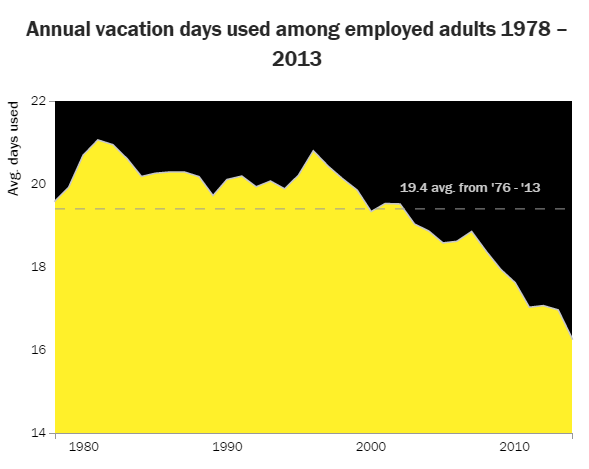
by Fronetics | Oct 20, 2015 | Blog, Leadership, Logistics, Strategy, Supply Chain, Talent

It’s common to think of the people who work for a company as “employees”, but reframing language and thinking could be critical to your supply chain. Start considering your employees as “talent”. The word employee has the connotation of working for someone or under someone. It implies being one of many, whereas the word talent has a positive connotation, implying that a person has depth, value, and potential. The term talent empowers both employees and companies to be the best and seek the best in their work and their search for other skilled people.
Reframing is an important step, but it doesn’t fix common problems that plague supply chain managers and human resource departments. It’s important to think about hiring processes as a long undertaking that extends beyond an ad, job interview, and offer letter. Companies should always be thinking about retention and promotion. This is called succession planning.
According to a study conducted by supply chain management researchers at Auburn University and Central Michigan University, 37.5% of surveyed companies had no engagement in succession planning, 27% had just started to work on planning, 23% engaged in informal planning, while only 12.5% engaged in formal succession planning.
Acquire
The supply chain is notorious for having a dearth of talent. The area is growing and more talent will need to be acquired for businesses to compete. As job titles expand and shift, due to the rapid changes in supply chain management and technological requirements, many people won’t be qualified for their own job title. Looking towards universities who are teaching supply chain management, and looking to other business sectors could be critical to find the right, flexible kind of talent the supply chain will need. Considering women for these traditionally male-dominant roles will also be important as women tend to be strong in many of the soft skills needed for the future of SCM. According to Shanton J. Wilcox, vice president, North America, and lead for logistics and fulfillment at Capgemini, “many so-called tactical jobs will be replaced by positions requiring more interpersonal and relationship management skills.”
Develop
As more and more money floods into the supply chain, it will be important to avoid the Silicon Valley problem of poaching, or talent leaving for larger and larger salaries elsewhere. Investing in current employees in a meaningful, attentive way, could make all the difference. Think about their future and next steps within your company. They probably have a plan for their future, and you should as well. Make sure those plans align and be open to assisting their journey to meet their goals.
Instead of conducting exit interviews, try conducting “stay” interviews. Ask specific questions about what it takes to create the environment that would help encourage your talents’ best performance. Ask what works, and also ask what doesn’t work. Be specific and ask what causes your talent anxiety or stress. You may find a trend and be able to fix it before people leave, rather than after. Investment is a big part of development. It helps talent feel like part of a bigger picture. If you invest in them they will invest in you.
Advance
Consider talent from within. According to a Forbes article, many companies are getting it wrong in trying to hire from outside. Internal candidates may not seem as appealing or exciting as the unknown, external candidate, but companies need to be clear-minded in these decisions. “Internal successors are in many ways lower risk than outsiders, yet surprisingly few promotions are awarded internally. That appears to be because boards often prefer the devil they don’t know to the devil they do. Also, some find it difficult to imagine someone at the top after seeing him operate in a lesser role for years.”
Internal talent may not appear to be ready for the next level if the position they’re seeking is a promotion, whereas an external candidate going for the same job may be making a lateral move and appear more “ready”. One thing to consider is the knowledge the internal candidate holds and brings to the job. Getting external talent up to speed can take months if not years.
Don’t sit back and assume your employees are willing to be passive about their careers. See your employees as assets. Have a strategy. Be part of their team, and make them part of yours. See their talent and invest in them, otherwise they’ll find another supply chain company who will.
You may also like:
Fronetics Strategic Advisors is a leading management consulting firm. Our firm works with companies to identify and execute strategies for growth and value creation.
We advise and work with companies on their most critical issues and opportunities: strategy, marketing, organization, talent acquisition, performance management, and M&A support.

by Elizabeth Hines | Oct 8, 2015 | Blog, Strategy, Talent

Hiring someone who says he or she is not a team player sounds like a risky proposition, right? Few employers are, after all, searching for renegade employees or stubborn loners who refuse to interact with co-workers. But what if it actually turned out to be a good strategy? Researchers at the University of Tuebingen set out to examine the effects on applicant pools by stressing the need for teamwork in job ads. The conclusion of the study puts it like this: “Given the evidence of a possible downside, it is recommended that firms should never look for team players just because ‘everyone else is doing so.'”
The study analyzed survey data from 1,300 college students who had been asked to evaluate a number of job postings that outlined various requirements, including whether the applicant should be a team player or an independent task-oriented self-starter. Interestingly, what researchers found was that although the ads did indeed attract applicants who considered their teamwork skills to be a primary asset, they also discouraged people whose qualifications matched the job description with the exception of one criterion: social skills. As a result, the employer missed out on technically skilled or task-oriented candidates who took themselves out of the running before the race even began. The study went on:
“…considering that organizations always need employees with high task-related skills, but that they may not always need team players, they should carefully consider when the requirement for teamwork skills is listed in their job advertisements—because there is a downside to looking for team players.”
For organizations that truly need employees with an aptitude for collegial collaboration, the study shows ads that stress the importance of possessing teamwork skills do what they were intended to accomplish. But in other cases, where teamwork takes a backseat to specific talents or technical skills, the employer is likely to end up with a smaller pool of applicants than if that routine phrase had been left out of the job requirements.
People who don’t cite social acumen among their list of skills may not thrive at “water-cooler conversations” or rush to plan the next company outing, but they know how to get the job done and they do it well. If teamwork is irrelevant to their job description, isn’t that all we really need?
Fronetics Strategic Advisors is a leading management consulting firm. Our firm works with companies to identify and execute strategies for growth and value creation.
We advise and work with companies on their most critical issues and opportunities: strategy, marketing, organization, talent acquisition, performance management, and M&A support.
We have deep expertise and a proven track record in a broad range of industries including: supply chain, real estate, software, and logistics.
![5 Tips Supply Chain Managers Need to Build Landing Pages That Convert [Infographic]](https://fronetics.com/wp-content/uploads/2024/10/landing-pages-that-convert.jpg)
by Fronetics | Sep 28, 2015 | Blog, Logistics, Marketing, Supply Chain, Talent

Landing pages are a fundamental tool in converting website visitors into leads. They’re what convince your visitors that they absolutely must download your fabulous resource offer. Yet often times they’re treated as the annoying little sibling to high-value content pieces – tagging along almost as if an after-thought. In reality, landing pages have just as much, and possibly even more importance than the content offer. Besides, what good is your best resource if it’s landing page stinks?
Here are five tips supply chain managers need to build landing pages that are sure to convert visitors into leads.


by Fronetics | Sep 2, 2015 | Blog, Marketing, Social Media, Strategy, Talent

92% of businesses use social media as a recruitment tool – and 75% of hiring managers say they check out candidate’s social media profiles. With hiring managers and recruiters using social media to post jobs and identify great talent, it is obvious that you need to use social media in your job hunt. What isn’t as obvious is how to do so without your current employer finding out.
Here are 4 tips for conducting a successful and stealthy job hunt:
1. Check/change your settings
Before you do anything check and change the settings on your social networks.
By default, social networks are set up to notify your connections of: changes made, connections made, and groups you join. Change this. Go into your settings on each of the social networks you are on and change your settings so that you can fly under the radar.
2. “Dress” professionally
You only have one chance to make a first impression. Your social media profile may be the first impression hiring managers and recruiters have of you. Your profile is also part of your professional brand. It’s therefore important to:
- Use a professional picture (no pets, no cropped arms)
- Remove party pictures and anything else that is not professional
- Be consistent with your personal branding across your profiles.
3. Optimize your social media profile(s)
Optimize your social media profiles to match the job you want. I’m not saying you should make up experience or skills, rather I am saying that you need identify the skills hiring managers and recruiters will be looking for, and highlight your applicable skills and experience. You want to optimize your profile so that your profile will not only showcase your qualifications, but will also ensure that your profile will show up when hiring managers and recruiters are searching for the ideal candidate for your dream job.
How do you do this? Start by defining your target industry and position. As you research companies and job descriptions that match your target make note of keywords (not buzzwords), skills, and qualifications that are recurring. Optimize your social media profile(s) to include these keywords and to highlight your relevant skills and experience.
4. Research, research, network
Research with the objectives of: identifying target companies and networking.
Use the keywords you identified in defining your target industry and position and search social networks for these keywords. (Don’t forget to search groups. LinkedIn groups, for example, are essential in your social media job hunt.) When your search turns up a company that looks to be a good match, look through your connections to learn if there is someone who can introduce you to an employee at the company (just remember not to use your employer or colleagues to make the connection). A connection is an opportunity to learn more about the company – the culture, opportunities, and challenges.
Employing these 4 techniques will help you use social media to find a job – without getting fired.
One thing to remember – a social media job hunt will prove much more successful if you have a strong network. Creating and building a network when you start your job search will leave you at a disadvantage. Networking is an action item necessary for your professional and personal growth. If you view networking as more than just a job search must, you will gain a competitive edge and will be in a much better place when it is time to start your search. So, get out there and “network your face off.”

by Fronetics | Jul 3, 2015 | Blog, Leadership, Strategy, Talent

In 1983, the year that Chevy Chase loaded his movie family into the Griswold’s station wagon in National Lampoon’s Vacation, Americans took an average of 20 vacation days. Now, the youngest member of the Griswold family is back on the big screen in 2015, this time taking his own family on a vacation. If Americans’ recent use of paid time off is any indication, reports suggest he’ll see a more open road than his father. Plummeting to an average of 16 vacation days in 2013, the time that Americans spend away from work has fallen precipitously over the past decade. And neither workers nor employers are benefiting from this marked decline.

Source: Project Time Off, Oxford Economics, 2014
You Need a Vacation
Occasionally escaping daily routine is central to both the physical and mental health of employees, and taking time off has been proven to boost work performance and productivity. A 2011 Harvard Medical School study found that sleep deprivation costs American companies $63.2 billion a year in lost productivity. Ernst & Young conducted an internal study of its employees in 2006 and found that for each additional 10 hours of vacation employees took, their year-end performance ratings from supervisors (on a scale of one to five) improved by 8%. What’s more, retention rates were significantly higher among vacationers.
Wish You Were(n’t) Here
Given that the Center for Economic Policy and Research reports that the United States is the only advanced economy in the world that does not guarantee its employees paid time off, it’s unlikely the use of vacation days will increase without some type of policy reform. With American employers not legally required to give workers either paid vacation time or paid holidays, a high number – 77% of private sector companies offer paid time off and paid holidays as part of employee compensation packages. Not surprisingly, though, as employee wage increases, so does the likelihood that they will receive time off; half of low-wage workers typically receive paid time off whereas more than 90% of high-wage workers receive paid time off.
Unplug and Unwind
Harris Interactive reports that people like the idea of more time off. Specifically, 50% of workers who receive paid vacation time in the top 10 cities in the US say they would be willing to sacrifice a workplace benefit for more paid time off. Ironically, although employees say they want more time off, 57% don’t take off the time they already receive. Each year there are 175 million vacation days which American workers are entitled to which are not taken. Even when employees actually do use their time off, they don’t spend the time unplugged. 47% of respondents in a recent survey by Pertino reported that they feel less stressed on vacation if they can stay connected to the office. The same study found that 59% of Americans regularly work, check email, take a phone call, and do other work related tasks while on vacation. But, aside from increased productivity upon their return, employers have another incentive to encourage employees to unplug while away. The Pertino survey found that 77% of those who work on their vacation do not have access to their office network. Because of this, employees use unsanctioned or unsecured cloud services (32%) and/or bring their work computers and files with them on vacation (35%). Public Wi-Fi hotspots are commonly used by vacationers, creating an opportunity for company data and/or log-in credentials to be stolen.
While there are certainly many factors at play in the 2013 job satisfaction study published by the non-profit research group Conference Board, it’s worth noting that back in 1987, when the average American worker took 20 days of vacation, job satisfaction stood at over 61%. Now that Americans have cut back on days away from the office, job satisfaction hovers slightly above 50%. There’s no definite way to tell if Americans could move the needle of job satisfaction by loading up their cars and hitting the open road, but it’s a good start. Let’s start making vacations work for us.
Fronetics Strategic Advisors is a leading management consulting firm. Our firm works with companies to identify and execute strategies for growth and value creation.
Whether it is a wholesale food distributor seeking guidance on how to define and execute corporate strategy; a telematics firm needing high quality content on a consistent basis; a real estate firm looking for a marketing partner; or a supply chain firm in need of interim management, our clients rely on Fronetics to help them navigate through critical junctures, meet their toughest challenges, and take advantage of opportunities. We deliver high-impact results.
We advise and work with companies on their most critical issues and opportunities: strategy, marketing, organization, talent acquisition, performance management, and M&A support.
We have deep expertise and a proven track record in a broad range of industries including: supply chain, real estate, software, and logistics.


by Fronetics | Jun 2, 2015 | Blog, Leadership, Strategy, Supply Chain, Talent

On average, men make more than women. Here’s why we need to change this and close the wage gap.
On average, men make more money than women. This is what we call the wage gap— the financial divide between the sexes. This is a complex issue, not one that has an easy explanation, but one that is deeply rooted in history, tradition, and culture. In a field that has been dominated by men, it is no surprise that women generally paid less than men in the supply chain.
We assume women have equal rights, given the number of anti-discrimination acts that have been passed, and protection from the Civil Rights Act of 1964 which outlawed discrimination based on sex, national origin, color, race, and religion. However, somehow women are still paid less, and almost 95 years after the Equal Rights Act amendment to the constitution was introduced, and 45 years since the amendment was passed by Congress, it has still not been ratified by the necessary number of states.
Women occupy just 15% of editorial pages, corporate boards, and congressional seats, according to the OpEd Project. The US ranks 20th overall out of 142 countries in the 2014 World Economic Report Global Gender Gap Report which examines and ranks a country’s level of equality based on health, education, earning potential, and political empowerment. Breaking the data down even more, it was found that the US was ranked 65th in wage equality out of 142 countries studied. Given its status as a leading world power, and that women are gaining great strides in education, what do these rankings mean for the United States?
The complexity of the wage gap
The wage gap is complex. It’s not simply a matter of blatant discrimination. Some argue that the pay gap is not a gender gap but a motherhood gap. Women tend to work part-time more than men due to demands at home, and part-time workers get paid less on average. Because women are often tied to domestic responsibility (ranging from cleaning, cooking and childcare) they work fewer hours than men, on average. They take more breaks from continuous employment and therefore may have decreased opportunities to get promotions, and climb the ladder. According to the Wall Street Journal, “today, childless 20-something women do earn more than their male peers. But most are likely to cut back their hours after they have kids, giving men the hours, and income, advantage.”
According to Kevin O’Marah, chief content officer at SCM World, there are two factors deterring women from rising through the supply chain ranks: first is the intermittent work history some women have due to family care, “Every day is a chance to have a disaster. It’s very high pressure. Stepping out for even a couple of months makes it very hard to get back in.” Second, O’Marah points to information that shows that men apply for jobs they’re not fully qualified for, whereas women only apply for jobs for which they feel they are 100% qualified. According to O’Marah, “Men are typically promoted on potential they exhibit, whereas women are promoted on results. Men jump at opportunities, even if they don’t have the qualifications; women have a tendency to say: ‘I’m not ready for that’.” Could the “feminization of higher education” be the confidence builder and, eventually, the equalizer women need in the future?
Women are excelling in education in the US, not only in terms of enrollment numbers, but also in terms of grades. Females spend more time studying and typically get better grades, however it has been found that the return on investment on a college degree for women was lower than, or the same as, for men. According to The Economist, “Although women as a group are now better qualified, they earn about three-quarters as much as men. A big reason is the choice of subject: education, the humanities and social work pay less than engineering or computer science. But academic research shows that women attach less importance than men to the graduate pay premium, suggesting that a high financial return is not the main reason for their further education.”
Addressing the gap
We know there’s a pay gap. Why should we help lessen it, and how do we do it?
Understanding that equal pay for women is a benefit for everyone, not simply for women, is key. According to the Shriver Report, one third of American women live in poverty. This puts a strain on an entire family, and on our social support systems. If women are given the education, support, and opportunities to work we can help alleviate poverty, stimulate economic growth, strengthen the middle class, and secure our place as a leading country.
Colleges and universities can continue to recruit and encourage women to apply, matriculate, and graduate from business programs. Harvard’s Peek Program is encouraging women to get a taste of what an MBA is like as a means of encouraging growth in their program, which is currently 41% female. In 2014, for the first time, females made up more than half of Rutger’s MBA students. There are many degree and diploma programs in Logistics and Supply Chain Management cropping up across the country. Encouraging young women to pursue this interesting and lucrative field is critical. Assuming that women should be funneled into typically “female” occupations is perpetuating the assumptions, prejudice, and micro-aggressions we often find in discrimination.
In an article on closing the gender gap in the supply chain, Will Green writes of a future in which, “’forward-thinking firms’ will team up with schools to encourage girls to study science and engineering, while successful women in these jobs will act as role models.” These firms will allow for an environment that is friendly to work-life balance for women and men, permitting women to rise through the ranks, also allowing men to take more of a role in domestic life. These things combined may help to achieve a sense of equality for women in the workplace.
It will benefit everyone if we can remember that we all have a role and a stake in the health and growth of the supply chain, whether we are leaders, employers, employees, consumers, male, or female. Our ranking, our integrity, our success, and our future as a country depend on it.



![5 Tips Supply Chain Managers Need to Build Landing Pages That Convert [Infographic]](https://fronetics.com/wp-content/uploads/2024/10/landing-pages-that-convert.jpg)






